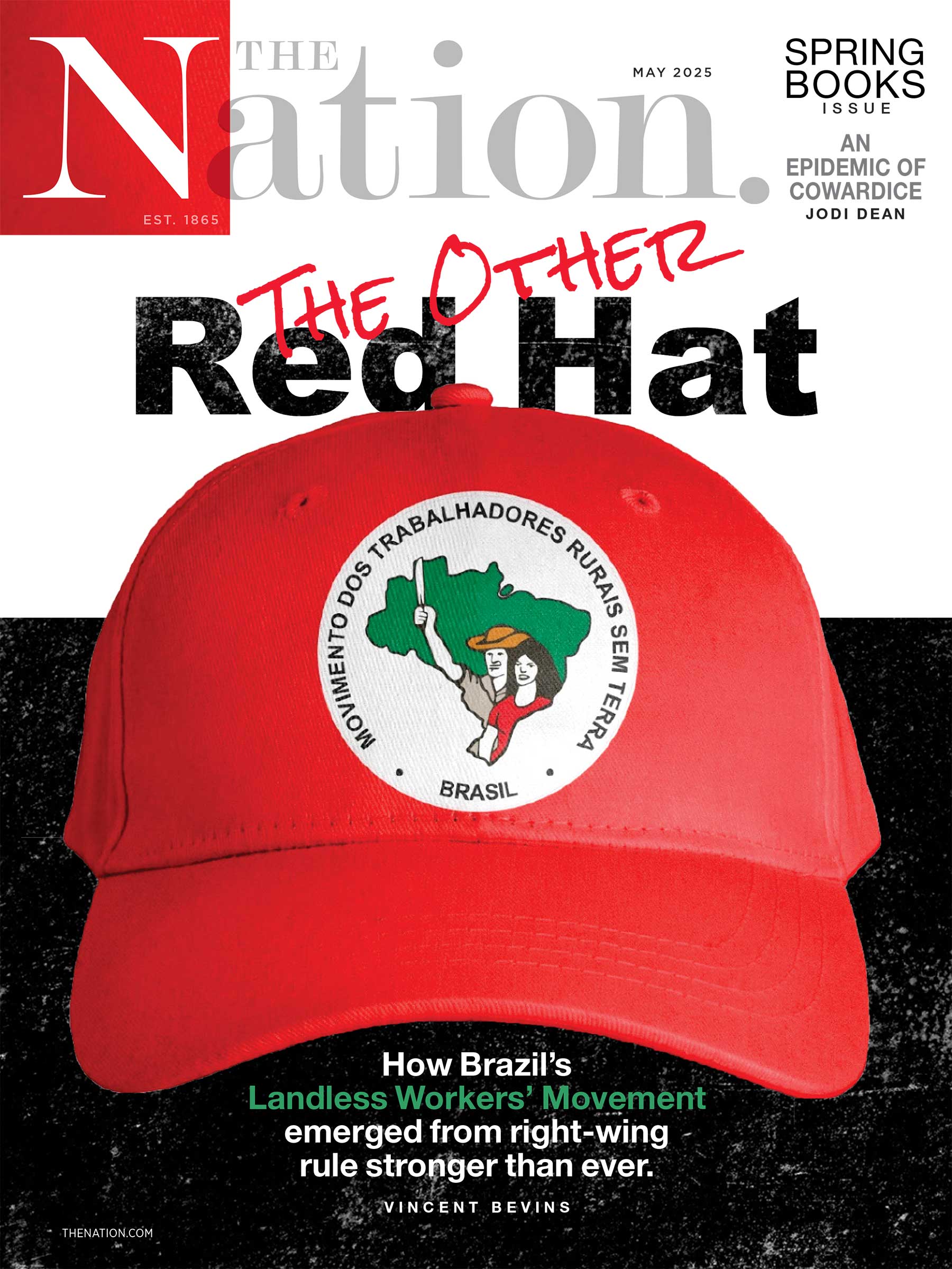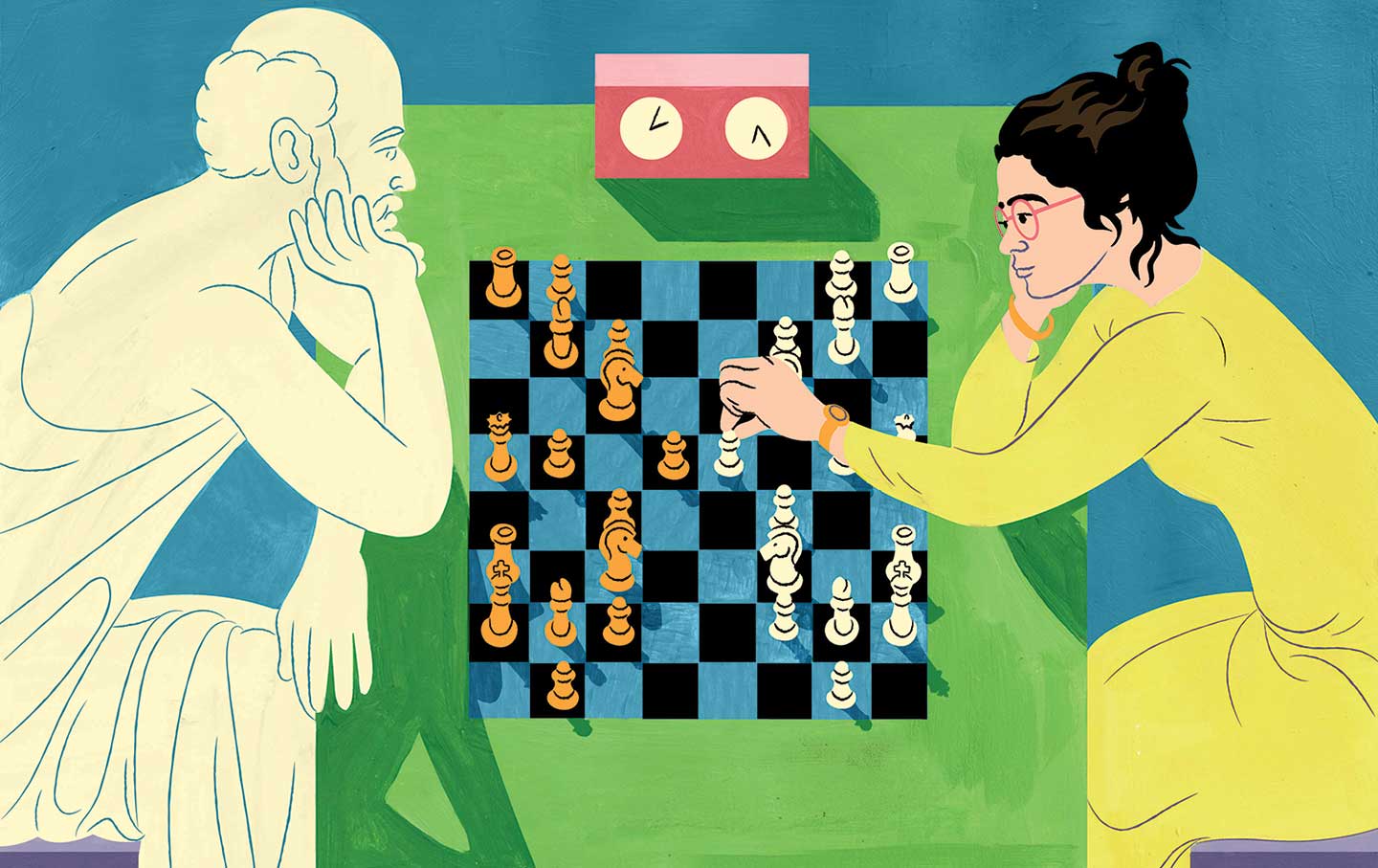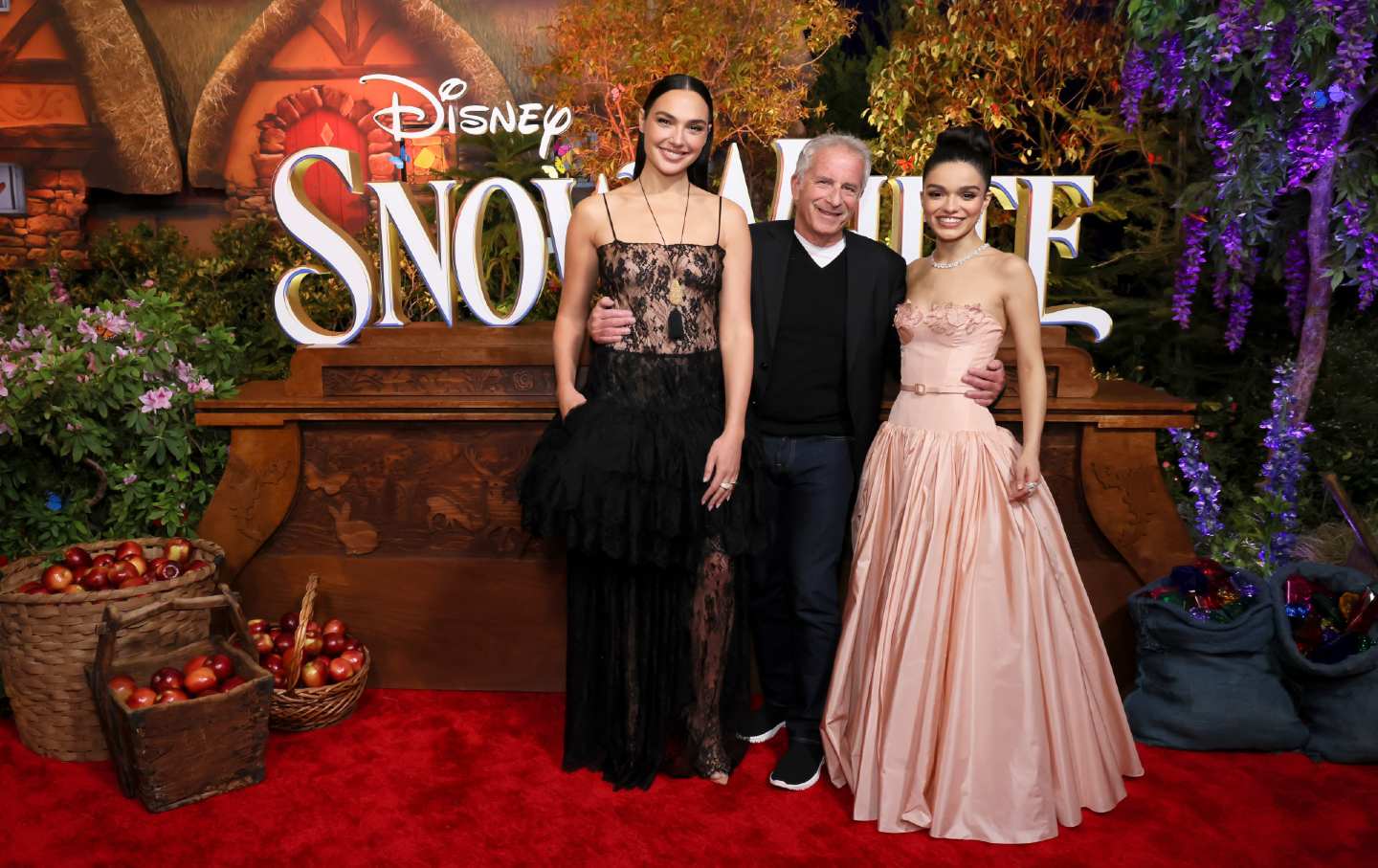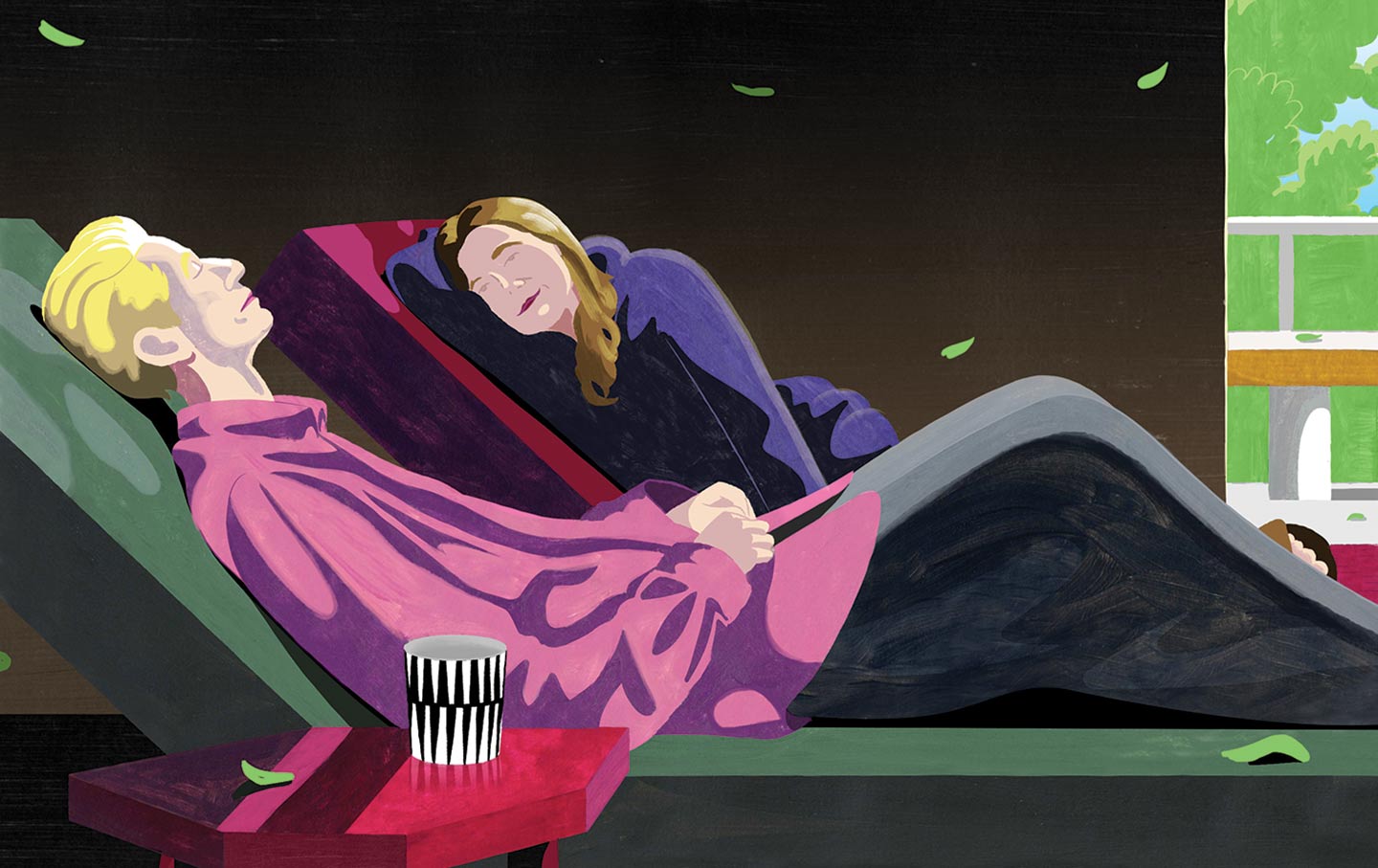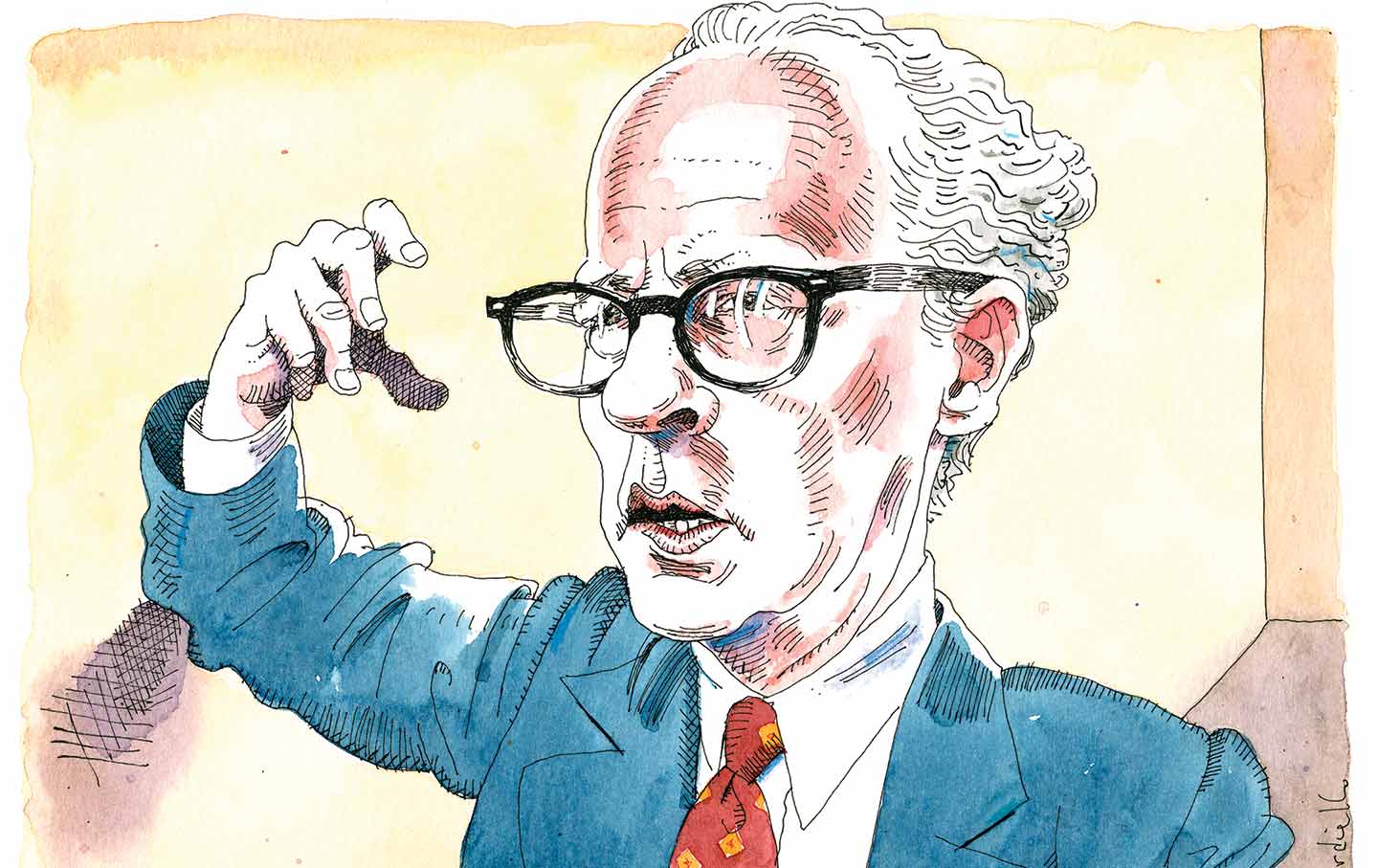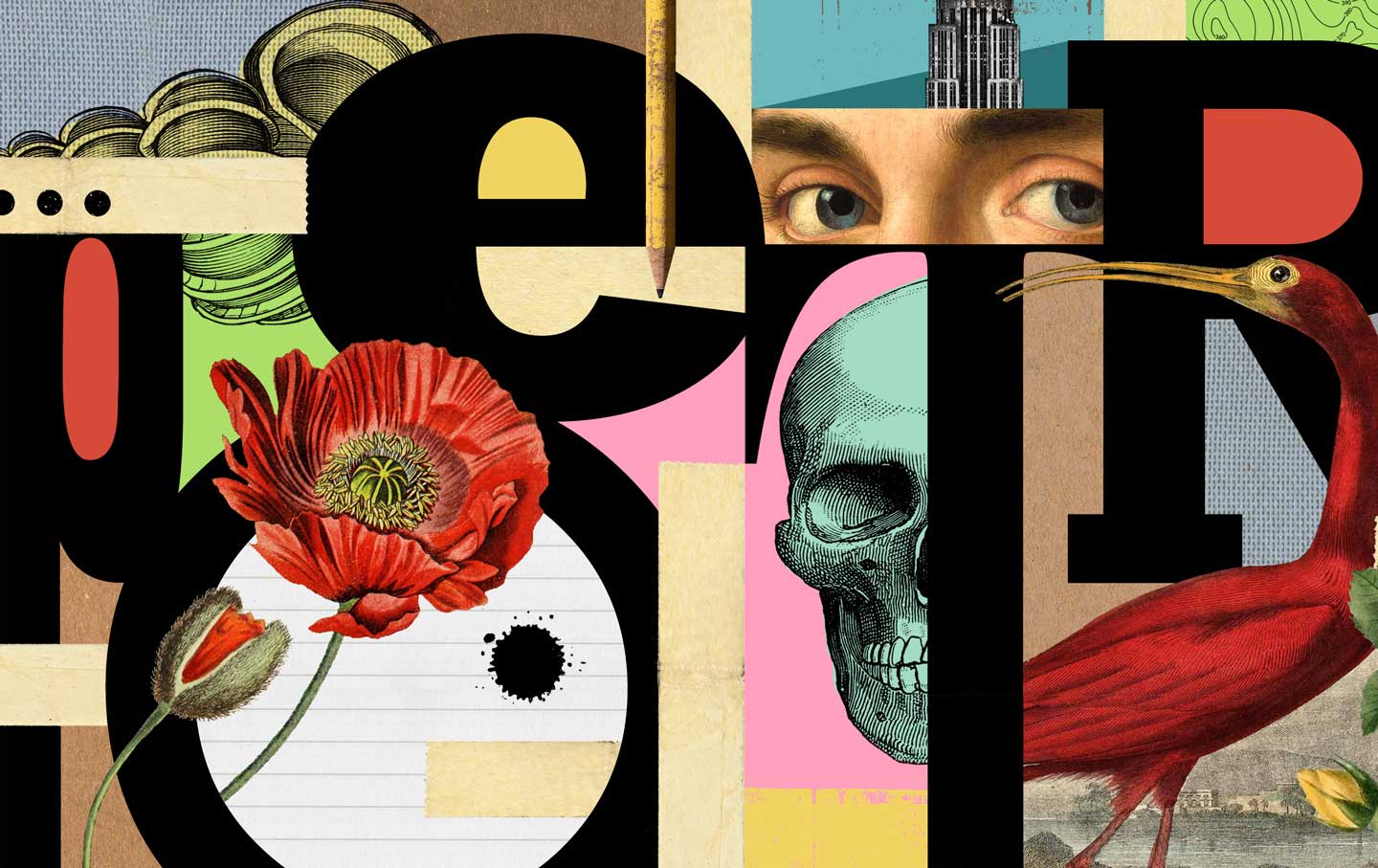The Excesses of Mickey 17
The Excesses of “Mickey 17”
Bong Joon-ho’s sci-fi blockbuster is both the director’s simplest and most unwieldy feature yet.
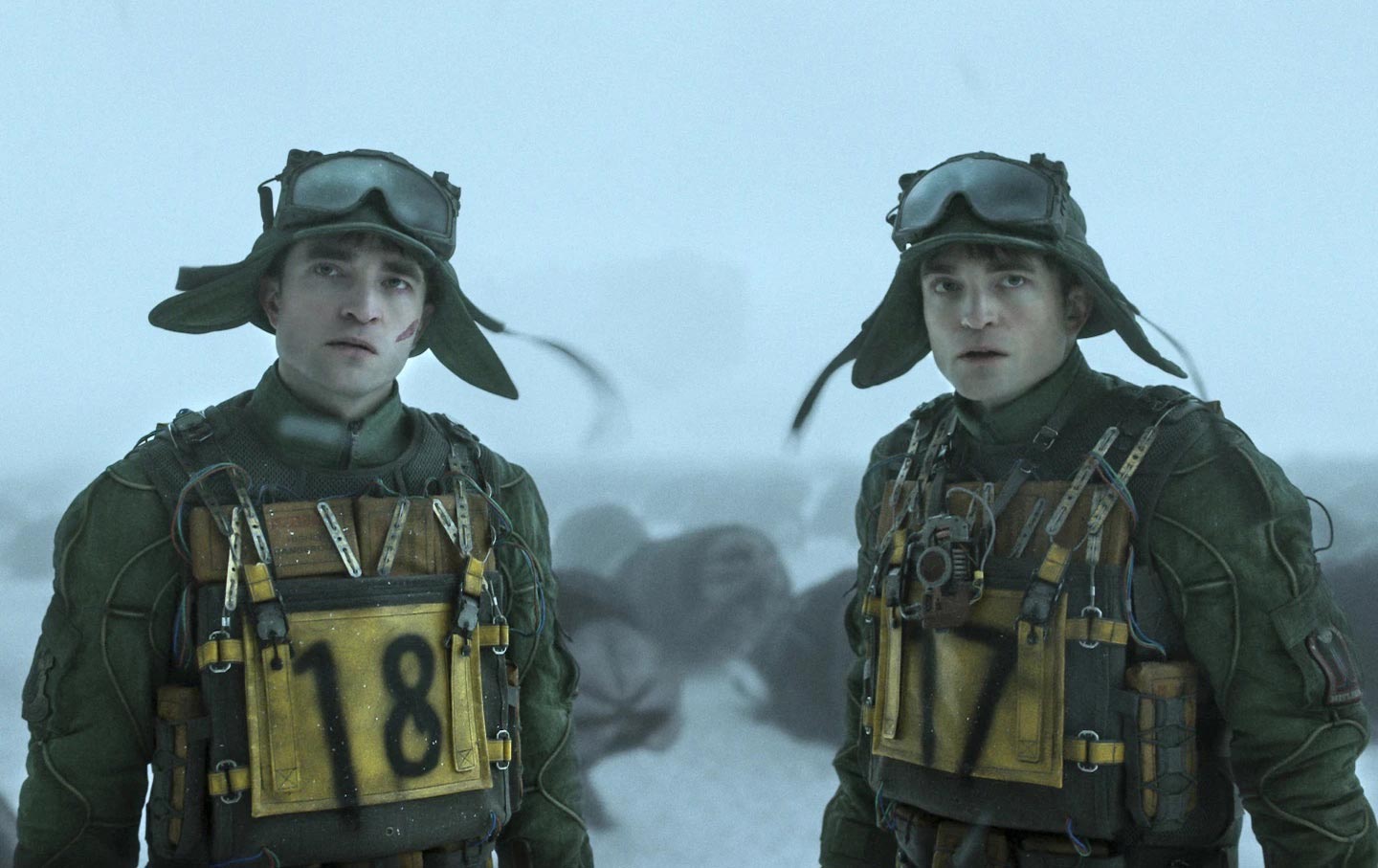
Cast adrift in an inky abyss and cleaved from the terrestrial realm that defines us, the human is forced by the hostile vacuum of outer space into a confrontation with body and being. Director Bong Joon-ho’s preferred mode of storytelling has long been a structural critique of power tempered by the humor he wrests from his films’ otherwise abject scenes, and in Mickey 17, it is precisely a space expedition that frames this romp through the horror and comedy of fleshly existence. Set in a future when interplanetary migration has become the solution to a ruined and depleted Earth, Mickey 17 is a dystopian reminder that we are closer to meat than stardust.
We first see the titular 17th iteration of Mickey (Robert Pattinson) deep in an icy crevasse on Niflheim, the frost-choked planet upon which Earth’s human settler-colonizers hope to manifest their destinies. He is slowly turning into a “meat popsicle,” as Pattinson relays in the squeaky voice-over that announces the film’s comic overtones. Mickey has just been left to a glacial death by Timo (Steven Yeun), his duplicitous friend, whose jaunty and dismissive farewell reflects Mickey’s harrowing station as an “expendable.” As the nomenclature suggests, expendables are a category of worker defined by their very lack of worth. They are contracted to die again and again, shorn of the mortality that confers upon human life its singular value. While Mickey is alive, of course, between these deaths, the tasks that occupy him could hardly be called living. His roles run the gamut from janitor to alien specimen collector to—most vital for the mission—medical test subject: We see his body, time and again, in various states of intubation, bleeding from every orifice, blistering open and writhing in pain. Like the workers who constitute the gig economy, Mickey is both indispensable and utterly disposable.
The expendables are made with a technology called “human printing,” a practice so ethically contentious that it has been banned everywhere on Earth. But sins have their proponents, and former congressman Kenneth Marshall (Mark Ruffalo)—a demagogue turned commander in chief of the Niflheim project—offers a utilitarian spin on the unholy multiplication of body and soul. Just as offshore production has long been a means of skirting domestic labor protections, Marshall and his corporate sponsors take their manufacturing off-planet, capitalizing on the legal and moral liminality of space to produce their endlessly renewable labor source, all in the name of “public service.” The process itself resembles cloning but is closer to a kind of Cartesian dualism in action, the newly printed human first a body, then a sentient being. Using Mickey’s biodata and a slab of recycled organic matter, the machine renders his physical particularities, from inner viscera to surface features. To the Mickey-shaped tabula rasa lying on the conveyor belt, damp and shivering like a newborn, a helmet uploads the memories that comprise his neural pathways and consciousness.
Adapted from a novel by Edward Ashton, Mickey 17 allows Bong to draw out the contours of a story that is, at its core, similar to those of his other films: a bumbling everyman (or child, as in Okja) confronts some harrowing system of exploitation—usually resource extraction—that sustains the material comforts of a moneyed class. But in the context of a sci-fi epic with a movie-star lead, there is an odd discordance among the different forms of spectacle with which the film is invested. While simultaneous displays of grandeur are standard for a studio blockbuster, Mickey 17 introduces a weightier theme alongside its many other concerns: It was the concept of human printing and its philosophical consequences that first drew Bong to Ashton’s source text. Against the plot’s basic architecture, all these elements vying for screen time make Mickey 17 both the director’s simplest and most unwieldy feature yet.
Most of the earlier Mickeys perish during experimental trials for a vaccine, developed to combat the virus that infests Niflheim’s atmosphere and liquefies human lungs from within. The montage of these recurring terminations teem with abject horror, Sisyphean repetitions that stretch into a rote log of harrowing deaths: Unknown gas fills an observation chamber; Mickey vomits blood; his body is flung into the churning magma of a sinister furnace that recycles a part of the old one; the printer flashes and ejects his successor; rinse and repeat. Late in the film, when we learn that Mickey was a lab rat not just for a vaccine but a fatal nerve gas, too, his preceding suffering dulls the revelation. Of course the colonial settlement was developing a genocidal chemical weapon all along, to be used against Niflheim’s native inhabitants: the centipede-like mammalians dubbed “Creepers.” Dismissed as vicious and cognitively undeveloped—or, in the usual colonizer’s shorthand, savage—the Creepers prove to be neither.
As in any tale of doppelgängers or clones, we know there will be an inevitable meeting of the doubles—the ultimate transgression. When the 18th Mickey is printed before his predecessor dies, the film tilts from one categorical debate—are the expendables human?—into another existential quagmire: Are all the Mickeys an extension of a single self? That Mickey 17 is immediately distinguishable from 18 is a testament to the strength of Pattinson’s performance, remarkable in the utter precision of his expressive capacities. As Mickey 17, he adopts a goofball squeak and clownlike exaggeration inspired, he has said, by anime, with facial tics so intricate he seems to have a preternatural control even over his eyelids. As the (inexplicably) sinister and stoic Mickey 18, Pattinson is slow and unblinking, his considered movements exuding an implacable intensity immediately recognizable against the twitchy nervousness of 17. When the latter screams, upon their first meeting, “I was never dead, so you don’t count,” he can hardly convince himself, let alone his rugged, self-possessed double.
There is a single redeeming feature to Mickey’s cosmic purgatory. Early on the voyage to Niflheim, he finds love in the form of the fierce and no-bullshit Nasha (Naomi Ackie), a revered and decorated soldier. Against all odds, Nasha has remained committed to every iteration of Mickey, rushing to his defense against the snickering bullies in the spaceship’s cafeteria, or cradling his head in a hazmat suit as he drifts toward a painful death, gassed with experimental chemicals by lab techs in white coats. Even when faced with the two Mickeys side-by-side, Nasha shows neither signs of repulsed confusion nor any diminishment in her love, its continuity from Mickeys 1 through 18 now spread across space instead of time.
Such is the strange tension between the film’s central plotlines: the far more compelling story of the two Mickeys and their shared paramour, and the clumsy political satire framing the colonization of Niflheim and the planned extermination of the Creepers by the human settlers. It’s unsurprising that a filmmaker who has loved kaiju productions since adolescence would let his imagination run rampant with a blockbuster budget.
Since Snowpiercer (2013) and Okja (2017), it has been clear that Bong works in two different but contiguous modes: There is a distinct nuance in the writing and pacing of his Korean-language films that is almost entirely at odds with his English-language productions. With ballooning budgets and the creative autonomy that accompanies the latter, there is an increasing sense that Bong is negotiating with the conflicting strategies of these two modalities: how to balance his long-standing ideological convictions in the context of domestic politics, and how to maintain a broader legibility by appealing to a global audience. Where The Host (2006) and Parasite (2019) examined the ongoing collateral damage of US military occupation in Korea and violent class antagonisms with wry precision, Mickey 17 treats these concerns like gaudy inflatables, blown up and paraded as maximalist caricature.
Even if US electoral politics plays like lunatic pantomime from the outside (as it so often does from within), the liberal critique of Marshall as a Trump analogue is so obvious as to be a little embarrassing, from his neofascist proclamations in favor of a “pure, white planet” to the religious morality that inflects his populist rallying call: “Let us use the abomination of human printing for our collective economic benefit.” Ruffalo’s performance summons the spirit of his turn as Duncan Wedderburn in Poor Things (2023), another histrionic cuck whose only skill is grandstanding. Marshall and his wife, Ylfa (Toni Collette), preen in aubergine suits and marigold satin against the functional grayscale of the spaceship’s industrial dystopia, their performance of hyperbolic villainy as one-note as their narrative function.
Still, despite its clumsiness, there is enough here to make Mickey 17 compelling as commercial fare: this is a Bong Joon-ho film after all, and his instincts for balancing humor and horror make for a propulsive watch. Early on, Mickey is tasked with fixing a cable error on the spaceship’s exterior but is soon told that he’s really been sent outside to see how humans react to “unthinkable levels” of radiation exposure. When the comms team calmly instructs Mickey to relay in detail how long it takes until his “skin starts to burn, until [he] goes blind, and until [he] dies,” his wide-eyed acceptance reframes the scene as a comedy. When the printer extrudes Mickey’s blank body onto the floor like a limp noodle as the unprepared lab techs scramble to catch it, the scene is funny in its incongruity, the project’s seriousness tempered by the scientists’ carelessness. Whenever his body briefly snags and jams up the printer, it’s hard not to wince a little—but it’s also hard not to laugh.
We know that the inanimate, freshly printed Mickey can’t feel a thing, but we still flinch when his body collapses and falls. Mickey knows that he will be resurrected whenever he dies, yet he cannot shake off the still-extant fear of death. This dissonance is the most compelling element of Mickey 17. At their best, Bong’s films ask their audiences not to think so much as feel out these questions through the director’s dexterous tonal maneuvers. For all its excesses, Mickey 17 shows how genre can amplify cinema as an embodied experience, an example of the human comedy made literal, propelled into the absurd.
